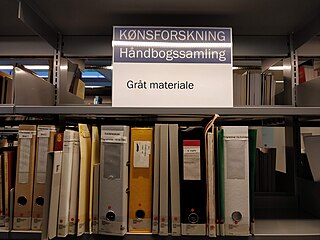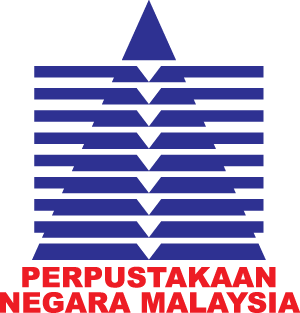Related Research Articles
Information retrieval (IR) in computing and information science is the process of obtaining information system resources that are relevant to an information need from a collection of those resources. Searches can be based on full-text or other content-based indexing. Information retrieval is the science of searching for information in a document, searching for documents themselves, and also searching for the metadata that describes data, and for databases of texts, images or sounds.
A citation index is a kind of bibliographic index, an index of citations between publications, allowing the user to easily establish which later documents cite which earlier documents. A form of citation index is first found in 12th-century Hebrew religious literature. Legal citation indexes are found in the 18th century and were made popular by citators such as Shepard's Citations (1873). In 1961, Eugene Garfield's Institute for Scientific Information (ISI) introduced the first citation index for papers published in academic journals, first the Science Citation Index (SCI), and later the Social Sciences Citation Index (SSCI) and the Arts and Humanities Citation Index (AHCI). American Chemical Society converted its printed Chemical Abstract Service into internet-accessible SciFinder in 2008. The first automated citation indexing was done by CiteSeer in 1997 and was patented. Other sources for such data include Google Scholar, Microsoft Academic, Elsevier's Scopus, and the National Institutes of Health's iCite.
A monograph is a specialist written work or exhibition on one subject or one aspect of a usually scholarly subject, often by a single author or artist. Although a monograph can be created by two or more individuals, its text remains a coherent whole and it keeps being an in-depth academic work that presents original research, analysis, and arguments. As a focused, in-depth and specialised written work in which one or more authors develop a uniform and continuous argument or analysis over the course of the book, a monograph is essentially different from an edited collection of articles. In an edited collection, a number of original and separate scholarly contributions by different authors are edited and compiled into one book by one or more academic editors.
ISO 690 is an ISO standard governing bibliographic references in different kinds of documents, including electronic documents. This international standard specifies the bibliographic elements that need to be included in references to published documents, and the order in which these elements should be stated.
A document-term matrix is a mathematical matrix that describes the frequency of terms that occur in a collection of documents. In a document-term matrix, rows correspond to documents in the collection and columns correspond to terms. This matrix is a specific instance of a document-feature matrix where "features" may refer to other properties of a document besides terms. It is also common to encounter the transpose, or term-document matrix where documents are the columns and terms are the rows. They are useful in the field of natural language processing and computational text analysis.
The Association for Information Science and Technology (ASIS&T) is a nonprofit membership organization for information professionals that sponsors an annual conference as well as several serial publications, including the Journal of the Association for Information Science and Technology (JASIST). The organization provides administration and communications support for its various divisions, known as special-interest groups or SIGs; provides administration for geographically defined chapters; connects job seekers with potential employers; and provides organizational support for continuing education programs for information professionals.
The Journal of the Association for Information Science and Technology is a monthly peer-reviewed academic journal covering all aspects of information science published by Wiley-Blackwell on behalf of the Association for Information Science and Technology. The journal publishes original research and rapid communications, as well as book reviews and announcements of the association. Occasional special issues appear with contents focused on a single topic area.

Grey literature is materials and research produced by organizations outside of the traditional commercial or academic publishing and distribution channels. Common grey literature publication types include reports, working papers, government documents, white papers and evaluations. Organizations that produce grey literature include government departments and agencies, civil society or non-governmental organizations, academic centres and departments, and private companies and consultants.

The National Library of Malaysia (PNM) is a library established under the National Library Act 1972 in Kuala Lumpur, Malaysia.
The UNISIST model of information dissemination was proposed in 1971 by the United Nations. UNISIST is a model of the social system of communication, which consists of knowledge producers, intermediaries, and users. These groups of people are different kinds of professionals. The social system also contains institutes such as research institutes, publishers, and libraries. The actors and institutions perform information services such as writing, publishing, storing and retrieving documents and information. The actors are communicating in both formal and informal ways and they are producing different kinds of documents such as journal articles, books, book reviews, proceedings, bibliographies and catalogues, dictionaries, handbooks, encyclopedias and review articles.
Aboutness is a term used in library and information science (LIS), linguistics, philosophy of language, and philosophy of mind. In LIS, it is often considered synonymous with subject (documents). In the philosophy of mind it has been often considered synonymous with intentionality, perhaps since John Searle (1983). In the philosophy of logic and language it is understood as the way a piece of text relates to a subject matter or topic. In general, the term refers to the concept that a text, utterance, image, or action is on or of something.
The Cranfield experiments were a series of experimental studies in information retrieval conducted by Cyril W. Cleverdon at the College of Aeronautics, today known as Cranfield University, in the 1960s to evaluate the efficiency of indexing systems. The experiments were broken into two main phases, neither of which was computerized. The entire collection of abstracts, resulting indexes and results were later distributed in electronic format and were widely used for decades.
The Journal of Documentation is a double-blind peer-reviewed academic journal covering theories, concepts, models, frameworks, and philosophies in information science. The journal publishes scholarly articles, research reports, and critical reviews.

Iranian Research Institute for Information Science and Technology (IRANDOC) is an Iranian research center with a national mission to meet the country's needs in the field of information science and technology.
The Library and Information Science Abstracts (LISA) is an international abstracting and indexing tool designed for library professionals and other information specialists. LISA covers the literature in Library and information science (LIS) since 1969 and currently abstracts 440+ periodicals from 68+ countries and in 20+ languages.
The Classification Research Group (CRG) was a significant contributor to classification research and theory in the field of library and information science in the latter half of the 20th century. It was formed in England in 1952 and was active until 1968. Informal meetings continued until 1990. Among its members were Derek Austin, Eric Coates, Jason Farradane, Robert Fairthorne, Douglas Foskett, Barbara Kyle, Derek Langridge, Jack Mills, Pauline Atherton Cochrane, Bernard Palmer, Jack Wells, and Brian Campbell Vickery. The group formed important principles on faceted classification and also worked on the theory of integrative levels.

The International Association of Music Libraries, Archives and Documentation Centres (IAML), also known as Association Internationale des Bibliothèques, Archives et Centres de Documentation Musicaux (AIBM) and Internationale Vereinigung der Musikbibliotheken, Musikarchive und Musikdokumentationszentren (IVMB), is an organisation of libraries with music departments, music conservatory libraries, radio and orchestra archives, university institutes, music documentation centers, music publishers, and music dealers that fosters international cooperation and promotes music bibliography and music library science. It was founded in Paris in 1951 and its three official languages are English, German, and French.

Edith Ditmas was an English archivist, historian and writer. She is thought to have had a master of arts degree from the University of Oxford and was unmarried.
Dirk Lewandowski (born 1973) is a German professor of information research and information retrieval at the Hamburg University of Applied Sciences, Germany.
David Bawden is a British information science scholar. He is a professor in the department of Library and Information Science at City, University of London. He is editor of the Journal of Documentation and has written or coauthored several books.
References
- ↑ Bawden, David (2016). "ASLIB: A de facto national library/information organization". Alexandria: The Journal of National and International Library and Information Issues. 26 (1): 15–27. doi:10.7227/ALX.0038. S2CID 219983549.
- ↑ Richards, Pamela Spence (1989). "ASLIB at War: The Brief but Intrepid Career of a Library Organization as a Hub of AlliedScientific Intelligence 1942-1945". Journal of Education for Library and Information Science. 29 (4): 279–296. doi:10.2307/40323598. JSTOR 40323598.
- ↑ First published 1955. The first volume included a paper by Edward G. Brisch on the Brisch classification ("Subject analysis in eighty-one concepts" in ASLIB Proceedings vol. 1 no. 3, 1955, pp. 157-162).